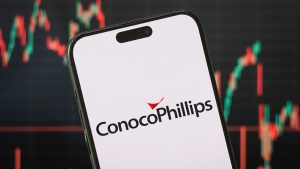The congressional race that saw the highest spending by its general election candidates, combined with spending by outside groups, was the Pennsylvania Senate contest, where Democratic nominee John Fetterman emerged victorious early Wednesday morning.
But Georgia’s contest is nipping at Pennsylvania’s heels, and is expected to wind up as the most expensive of this year’s midterm elections. The race between Democratic Sen. Raphael Warnock and Republican Herschel Walker has gone into overtime, with a runoff set for Dec. 6.
The Georgia race is on track to become the congressional race with the highest amounts of both candidate fundraising and outside spending.
The Democratic Senatorial Campaign Committee is dropping $7 million on field operations in Georgia and the National Republican Senatorial Committee on Tuesday formed a joint fundraising committee with Walker’s campaign and the Georgia Republican Party.
“The collective effort is the most efficient and effective path forward,” NRSC Chairman Rick Scott, a Florida Republican senator, wrote in a memo on Wednesday. “While we anticipate independent outside groups will get involved in the race, our joint effort is the most important because it will encompass all tactics under a unified strategy between Team Herschel and the Party.”
The Republican super PAC, Opportunity Matters Fund Action, reported the first runoff independent expenditure to the FEC on Wednesday. The group’s first buy was $100,000 in digital advertising supporting Walker.
Much more spending is expected to follow in the coming weeks.
Sheila Krumholz, executive director of the nonpartisan campaign finance watchdog OpenSecrets, predicted to Reuters that at least $100 million more in outside spending will flow into the Senate showdown ahead of Dec. 6.
During Warnock’s previous runoff, the Democrat raised $58.1 million between Nov. 4, 2020, the day after the general election, and Jan. 5, 2021 — bringing his total fundraising haul that cycle to more than $130 million, according to a post-special election report filed to the Federal Election Commission. And that’s not including outside spending, which topped $160 million during the runoff.
Runner-up Pennsylvania
Pennsylvania is expected to be the runner-up to Georgia in the money race, having to date seen by far the most outside spending this cycle, in part due to the competitive primaries it held in May.
Fetterman’s challenger Mehmet Oz was one of 20 Senate candidates appearing on the ballot Nov. 8 (including independent and third-party candidates) to have self-financed more than $10,000 in support of his campaign.
See: Who’s giving to Dr. Oz as he seeks to represent Pennsylvania? Not many Pennsylvanians.
Fetterman and Oz spent a total of $89.9 million on their campaigns through Oct. 19, according to OpenSecrets. That makes it the third-highest congressional race in terms of general election candidate spending — behind Florida’s Senate race at $110 million and Georgia’s Senate race at $108 million.
According to OpenSecrets, $123.8 million in outside spending — meaning expenditures made independently of, and not coordinated with, a campaign —supported Fetterman or opposed Oz. $98.6 million in outside spending went to supporting Oz or opposing Fetterman.
The collective $222 million in outside spending boosting Fetterman and Oz is over 50% more than how much outside spending boosted Warnock and Walker in Georgia, the race with the second highest level of outside spending.
“Both Democrats and Republicans saw the Pennsylvania Senate race as one of the top battleground states and both sides invested massive resources in trying to get their preferred candidate over the finish line,” said Michael Beckel, research director at Issue One, a nonpartisan political reform organization.
Fetterman’s win delivered a major blow to Senate Leadership Fund, the race’s biggest outside spender at $47.5 million. That was the most the super PAC invested in any one race, according to OpenSecrets, with its second most expensive target being the Georgia Senate race at $38.4 million. SLF is aligned with Senate Minority Leader Mitch McConnell, a Kentucky Republican.
The Democratic equivalent of the Republican super PAC, the Senate Majority PAC, had $45.9 million in outside spending supporting Fetterman’s bid, making it the second biggest outside spending group in the race. Much like SLF, the race was the group’s most expensive target.
Beckel said that “self-funders are often attractive to both parties” because it allows national organizations and political action committees to direct more resources to other competitive races.
“For every dollar that a candidate is able to self-finance, that’s money that could get steered into other campaigns, other races across the country,” he said.
Three Senate candidates that have self-financed over $10,000 have won election: Republicans Ted Budd in North Carolina, J.D. Vance in Ohio and Markwayne Mullin in Oklahoma’s special election. The Arizona Senate race has not yet been called by the Associated Press, but is the only remaining race with a candidate who self-financed in part — Republican Blake Masters.
While the majority of those self-financing this cycle lost their elections, Oz’s loss stands out, as he invested far more of his own money than any of the other self-financing candidate: $22.8 million.
Since 2010, the top self-funding congressional candidate has lost every election cycle, except in Republican Rick Scott’s 2018 Senate bid, for which he self-financed $63.6 million.
“One of the trends with self funding over the years is that not every self-funder is an electoral success,” Beckel said. “Candidates are often evaluated on what else they’ve done, what their background is, what their ideas are, what their platform is, what kind of campaign they’re running.”
He added: “Deep pockets alone don’t win elections, but they are a way for you to help introduce yourself to voters and get your message out.”
A recent Supreme Court ruling would make it easier for Oz to repay some or all of his loan if he so chooses, though it will be a few more weeks before his campaigns reports how much money he ended his bid with. “And as a losing candidate, he might have a tougher time raising money for the sole purpose of paying back loans versus somebody who is in office,” Beckel noted.
Now see: Meet the 10 biggest megadonors for the 2022 midterm elections
This post was originally published on Market Watch




